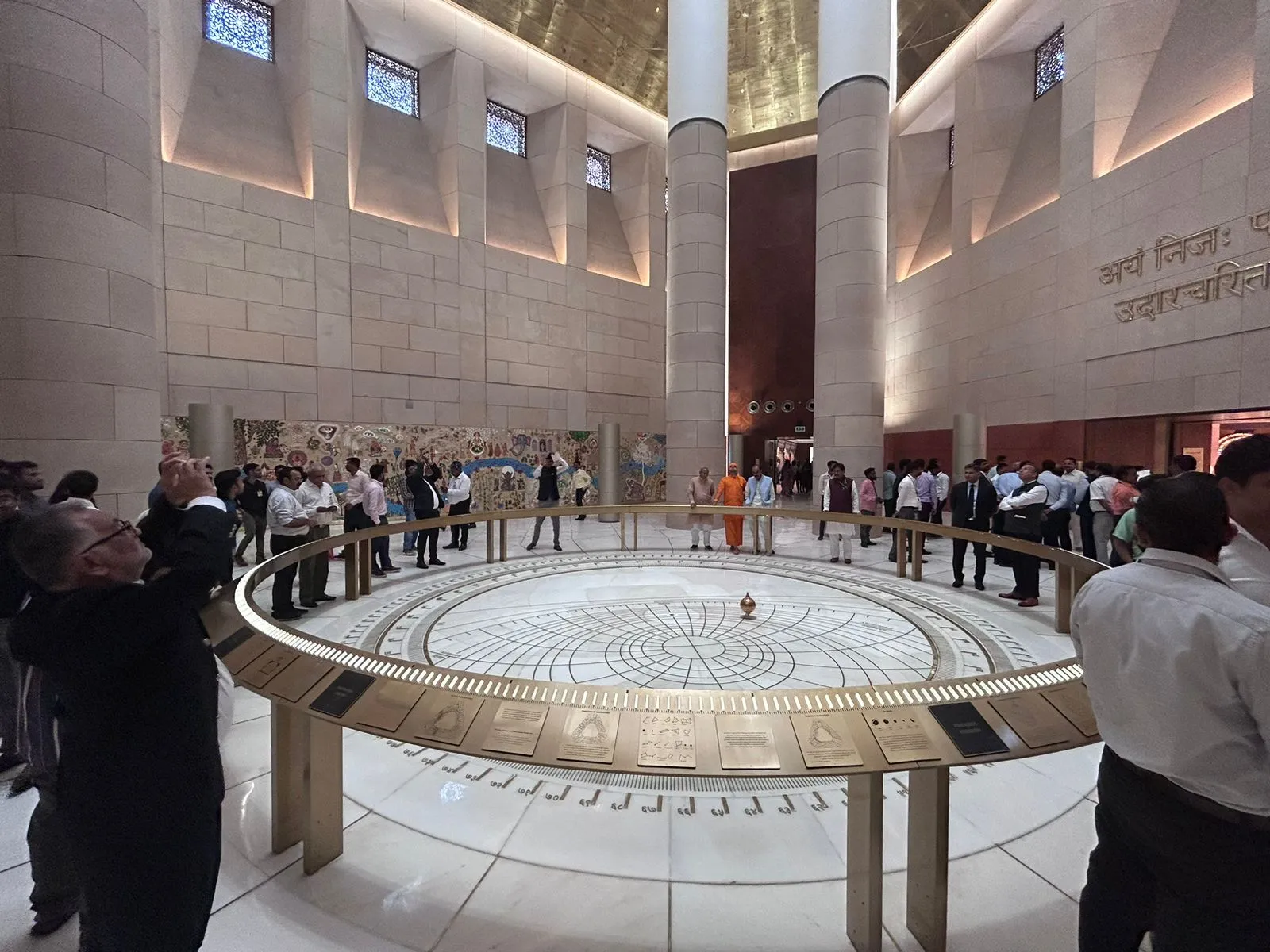The newly inaugurated Parliament has a unique device suspended from the ceiling in the Central Foyer, which has emerged as a major attraction.
Foucault's Pendulum: A Symbol of India's Commitment to Science and Technology
The unique system touches the floor of the building as it rotates on its axis, showing a unique astronomical event – the rotation of the planet.
Dubbed Foucault’s pendulum, it has been installed in the new Parliament by the National Council of Science Museums.
What is Foucault's pendulum? How does it work?
The Foucault’s Pendulum was named after French physicist Léon Foucault who invented it in the mid-19th Century.
Foucault pendulums are used to demonstrate the Earth’s rotation. The pendulum is suspended from a wire that is attached to a fixed point on the ceiling. As the Earth rotates, the plane of the pendulum’s swing gradually changes. The rate at which the plane changes depends on the latitude of the pendulum. At the equator, the pendulum would not rotate at all, but at the poles, it would complete one rotation every 24 hours.

Foucault’s pendulum at the new Parliament building in New Delhi is a 22-meter-tall, 36-kilogram pendulum suspended from the ceiling of the Central Foyer. It is the largest such pendulum in India, and was designed and installed by the National Council of Science Museums (NCSM) in Kolkata.
The Foucault pendulum at the new Parliament building is suspended from a skylight at the top of the Constitution Hall. Visitors can stand under the pendulum and watch as it swings, gradually changing its plane over time. The pendulum takes about 49 hours and 59 minutes to complete one rotation at the latitude of New Delhi.
The ceiling of the Constitution Hall contains Nakshatras, a few other asterisms and planets present at 00:00 hours of 26 January 1950 (the day when the constitution was implemented in India) and the floor below Foucault’s pendulum has design of astrolabe.

The significance of Foucault's pendulum at the new Parliament building
The Foucault pendulum at the new Parliament building is a symbol of India’s commitment to science and technology. It is also a reminder that India is part of a larger world, and that the Earth rotates on its axis every 24 hours.
The Foucault pendulum is also significant because it represents the “integration of the idea of India with the idea of the cosmos.” The Indian Constitution upholds the importance of scientific temper, and the Foucault pendulum is a physical manifestation of this ideal.
These craters are like natural laboratories that help us understand the mysteries of the universe.
The Foucault pendulum is a popular tourist attraction at the new Parliament building. The pendulum is also a reminder of India’s rich cultural heritage and its commitment to progress.
Check Out Our Latest Blog on Famous impact craters on Earth
